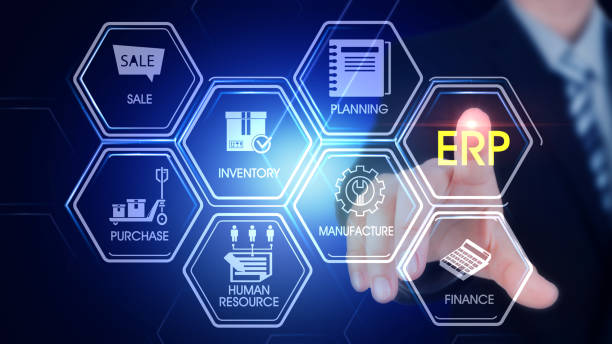
- June 12 2025
- SFI Solution Team
Upgrading ERP Systems Without Breaking Integrations
Upgrading your ERP (Enterprise Resource Planning) system is crucial for sustaining agility, ensuring security, and fostering innovation. Nevertheless, a significant concern for many businesses is how to upgrade ERP systems without compromising essential integrations with other applications, platforms, and data sources.
Whether you are linking to CRM systems, third-party logistics providers, payroll platforms, or custom-built applications, it is imperative to maintain the integrity of these integrations. Disrupted integrations can lead to operational downtime, data loss, and a negative impact on revenue.
In this blog, we will examine the most effective strategies, tools, and industry practices for successfully upgrading ERP systems while safeguarding the stability and functionality of your integrations.
Why ERP Upgrades Are Necessary
ERP systems serve as the backbone of business operations, managing everything from finance and supply chain to HR and customer service. Over time, however, outdated ERP systems can lead to :
-
Slower performance
-
Security vulnerabilities
-
Lack of scalability
-
Incompatibility with modern tools
-
Increased maintenance costs
To stay competitive, organizations must modernize. Yet, the fear of breaking integrations often leads to postponing much-needed upgrades.
Common Integration Risks During ERP Upgrades
When upgrading ERP systems, several integration-related issues can arise :
-
Data mapping inconsistencies between old and new systems
-
API deprecation or changes in endpoint structures
-
Timing mismatches with connected systems (e.g., batch jobs, triggers)
-
Security policy differences between ERP versions
-
Lack of documentation on legacy integrations
Mitigating these risks requires a strategic, methodical approach.
Best Practices for Upgrading ERP Without Breaking Integrations
1. Conduct a Comprehensive Integration Audit
Before initiating the upgrade, map out all existing integrations, including :
-
Connected applications
-
Data flows and dependencies
-
Custom scripts or middleware in use
-
APIs, protocols, and authentication methods
This creates a baseline for testing and comparison later in the process.
2. Use Middleware or iPaaS Solutions
Modern integration platforms such as Infor ION, MuleSoft, Dell Boomi, or Workato act as intermediaries between ERP systems and other apps. They can abstract away complexity, making upgrades more seamless.
Benefits include :
-
Centralized integration management
-
Real-time monitoring and logging
-
Easier troubleshooting
-
Decoupling ERP logic from third-party apps
3. Embrace API-First Architecture
If your ERP system supports RESTful or SOAP APIs, prioritize integrations through these services. APIs are typically versioned and backward-compatible, reducing disruption risk during upgrades.
4. Test in a Parallel Environment
Never upgrade in production without thorough testing. Set up a sandbox environment to :
-
Deploy the upgraded ERP system
-
Migrate a snapshot of real data
-
Reconnect and test all integrations
Run performance tests, simulate edge cases, and monitor logs to catch anomalies.
5. Ensure Data Integrity During Migration
Data migration is one of the most error-prone parts of an ERP upgrade. Follow these guidelines :
-
Clean and validate data before migration
-
Use ETL tools or migration scripts for precision
-
Reconcile pre- and post-upgrade datasets
If possible, schedule the migration in phases to reduce downtime.
6. Version Control and Rollback Plans
Have a rollback strategy in place in case an integration fails post-upgrade. Use :
-
Git for version-controlling integration scripts
-
Snapshots or backups for ERP instances
-
Revertible migration plans
Avoid irreversible changes unless you’re 100% confident in testing outcomes.
7. Involve Stakeholders Early
Bring in IT teams, business users, integration architects, and vendor partners early in the planning stage. Cross-functional collaboration ensures :
-
Smooth knowledge transfer
-
Identification of critical touchpoints
-
Better risk management
8. Schedule Downtime Strategically
If some integrations must go offline temporarily, schedule upgrades during off-peak hours or holiday seasons. Communicate expected downtimes and recovery timelines to stakeholders.
Real-World Example : ERP Upgrade with Infor ION
Many businesses using Infor ERP platforms rely on Infor ION for system integration. When upgrading Infor ERP CloudSuite or LN, ION helps maintain continuity by :
-
Keeping integrations loosely coupled
-
Supporting legacy and modern APIs simultaneously
-
Offering flexible workflows and data transformation layers
This modularity is particularly helpful for phased migrations.
Measuring Success Post-Upgrade
Post-upgrade, evaluate :
-
Integration uptime and latency
-
Data consistency across systems
-
API call success rates
-
User feedback from dependent systems
Set monitoring alerts for anomalies and schedule periodic health checks.
Conclusion
ERP upgrades are not just IT projects—they’re business-critical transformations. While the fear of broken integrations is valid, with careful planning, the right tools, and proactive communication, it’s entirely possible to upgrade ERP systems without disrupting your ecosystem.
Ready to upgrade your ERP with confidence?
Partner with experienced ERP consultants by contacting us at +1 (917) 900-1461 or +44 (330) 043-1353, and leverage modern integration platforms to future-proof your enterprise systems.
Previous Post